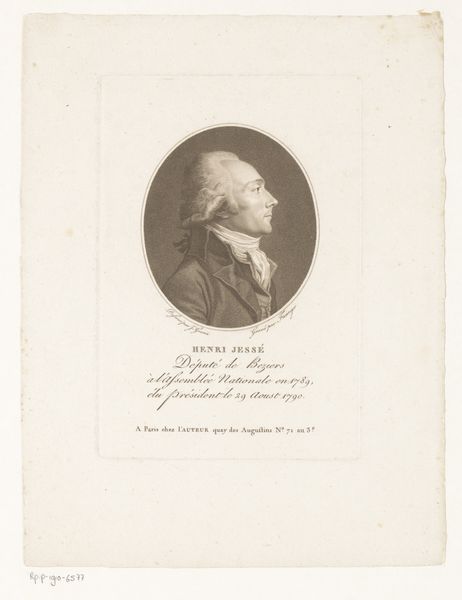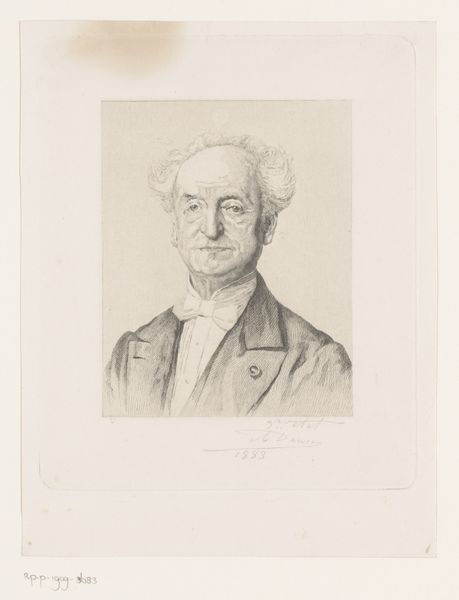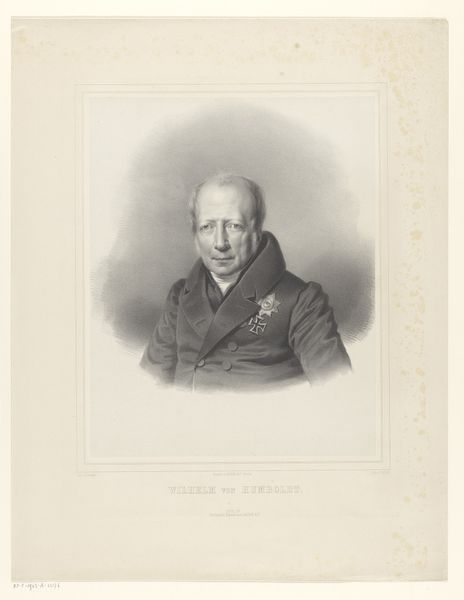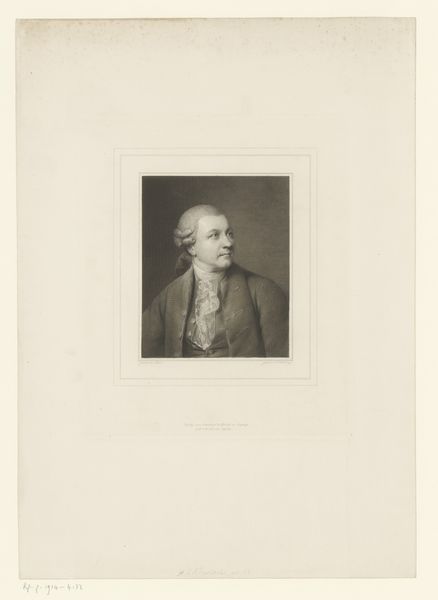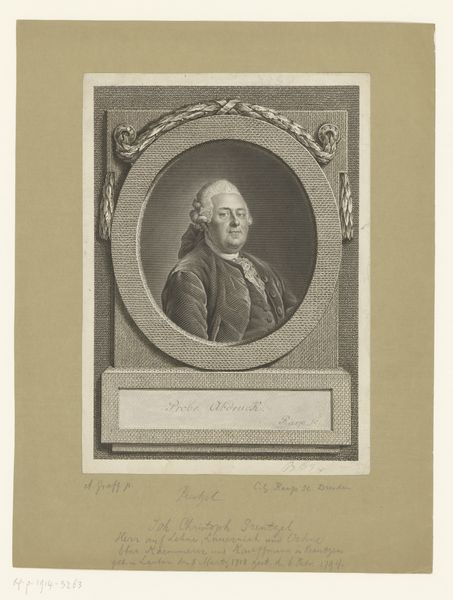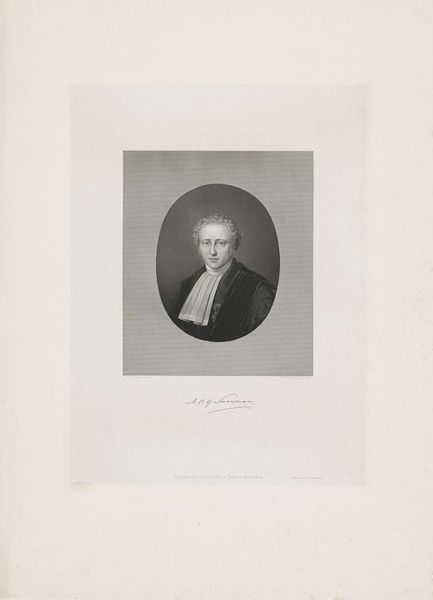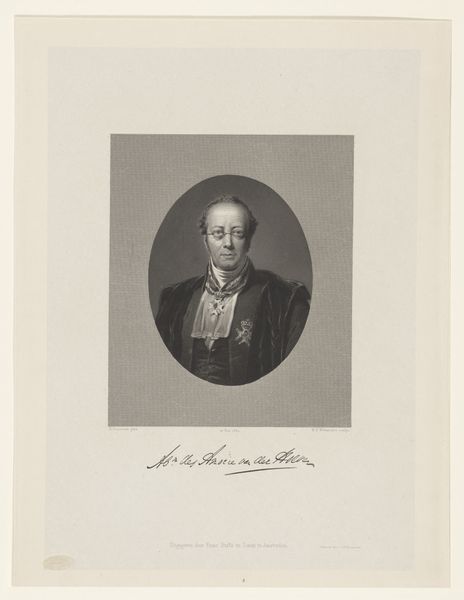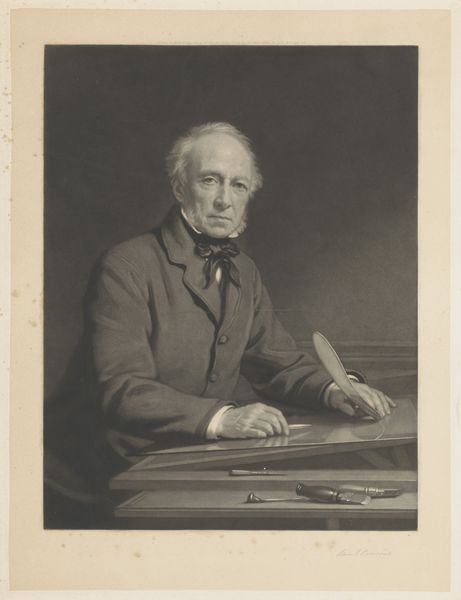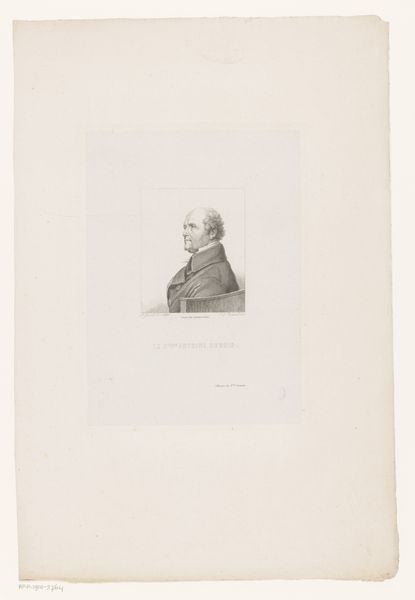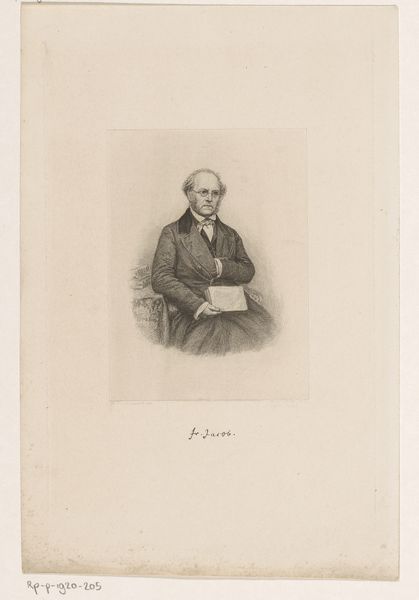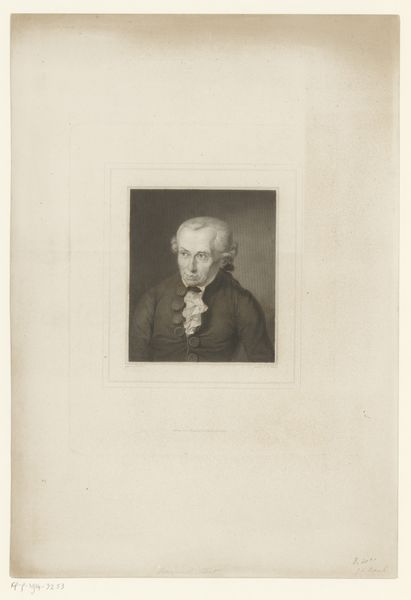
Dimensions: height 267 mm, width 229 mm
Copyright: Rijks Museum: Open Domain
Editor: Here we have Johann Leonhard Raab’s “Portret van Wilhelm von Humbolt,” created sometime between 1840 and 1899. It's an engraving on paper. I find the detail achieved with this technique remarkable; what aspects of this work strike you most? Curator: I am drawn to consider the socio-economic conditions of printmaking in 19th-century Europe. Engraving, while demanding significant skill and time investment, also facilitated the wide distribution of images. This begs the question, for whom was this portrait produced, and what were the mechanics behind its consumption? Editor: So, you’re thinking about its accessibility and intended audience? I hadn’t considered that. Curator: Precisely. While seemingly a high-art form, engravings were often a commercial enterprise. Looking at the paper itself, its texture and potential sourcing, informs us about trade routes and the economy of artistic materials during that period. Were there mass-produced papers alongside higher-quality sheets, and what choices were being made in the selection? Editor: That’s fascinating. I typically think about the aesthetic qualities first. Curator: The image serves as an extension of the raw materials and the labor. How might we look at the star, considering craft guilds and societal hierarchies within those structures? Humboldt would embody privilege; therefore, examining that within the art making, who benefits most from the materials themselves, offers unique cultural perspectives. Editor: It challenges the usual approach of looking at art as a product, to think about it as part of production itself. Thank you! Curator: It is crucial to acknowledge both the art making and the greater means of production that support it. The combination offers us deeper insights and reminds us that art, is interwoven within human existence.
Comments
No comments
Be the first to comment and join the conversation on the ultimate creative platform.
